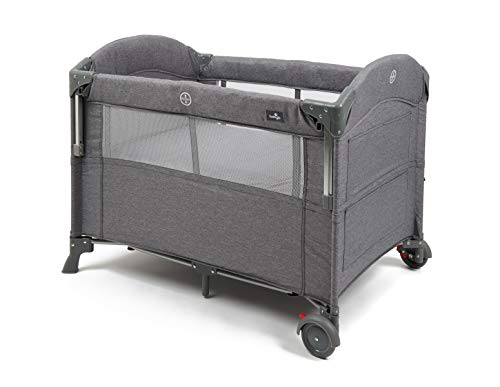The Side Sleeping Crib: A Comprehensive Guide for New Parents
Welcoming a newborn into the world is a cherished experience filled with joy and challenges. Amongst the numerous considerations new parents should browse, choosing the right sleeping plan for their baby is critical. One ingenious solution that has actually acquired appeal in recent years is the side sleeping crib. This post will look into the functions, benefits, and factors to consider surrounding side sleeping cribs, providing a vital resource for new parents.
What is a Side Sleeping Crib?
A side sleeping crib, also understood as a co-sleeper or bedside crib, is designed to provide a safe sleeping space for infants while maintaining close proximity to their parents. These cribs can be attached to the side of an adult bed or utilized as standalone units. Bedside Cot For New Parents use the benefit of co-sleeping without sharing the very same sleep surface, minimizing the risk of suffocation and facilitating much easier nighttime feedings and comforting.
Advantages of a Side Sleeping Crib
- Increased Safety
Among the primary benefits of side sleeping cribs is improved safety. The American Academy of Pediatrics recommends that infants sleep in the same room as their parents for at least the first 6 months to lower the threat of Sudden Infant Death Syndrome (SIDS). By utilizing a side sleeping crib, parents can keep their baby within arm's reach while sticking to security standards. - Convenient Nighttime Feeding
Nighttime feedings can be an exhausting routine for new parents, however a side sleeping crib makes this procedure significantly simpler. Parents can simply reach over to comfort or breastfeed their baby without needing to fully awake or get out of bed. - Reduces the Transition to Independence
Side sleeping cribs can help in gradually transitioning babies into independent sleep environments. Parents can move the crib even more far from their bed with time, promoting independence while still maintaining a complacency for the child. - Conserves Space
For households living in smaller sized homes or apartment or condos, a side sleeping crib occupies less space than a standard crib, making it a perfect choice for those with restricted room. - Promotes Bonding
Close distance permits parents to easily keep an eye on and react to their baby's needs, fostering bonding and attachment throughout those important early months.
Choosing the Right Side Sleeping Crib
When selecting a side sleeping crib, numerous factors ought to be thought about to guarantee it fits the needs of both the baby and the parents:
- Safety Standards: Ensure that the crib meets safety requirements set by reliable organizations, such as the Consumer Product Safety Commission (CPSC).
- Adjustability: Look for cribs with adjustable heights to align with the parents' bed and make sure easy access.
- Stability: A silver lining sleeping crib ought to be steady without wobbling or moving when connected to the moms and dad's bed.
- Portability: Consider cribs that are lightweight and have wheels for easy motion around the home.
- Material: Opt for cribs made of non-toxic materials that are complimentary from damaging chemicals.
Aspects to Consider
While side sleeping cribs present many advantages, parents should likewise keep these consider mind to make a notified choice:
- Size of the Bed: Ensure the crib fits firmly along with the adult bed, without gaps that could position a security threat.
- Baby's Growth: Be conscious that as infants grow, their sleeping needs will alter. Some cribs are convertible and can be used longer than conventional cribs.
- Sleeping Habits: Consider how easily you and your partner get used to having the baby close by throughout the night.
Frequently Asked Questions About Side Sleeping Cribs
Q1: Are side sleeping cribs safe for newborns?A1: Yes, side
sleeping cribs supply a safe sleeping environment for newborns when utilized properly, as they lower the risk of SIDS while enabling parents to stay close.
Q2: How do I put together a side sleeping crib?A2: Assembly directions usually accompany the crib. Ensure it is safely attached to the adult bed, following the guidelines supplied by the manufacturer. Q3: Can I use a side sleeping crib
for longer than six months?A3: Yes, numerous side sleeping cribs can accommodate infants beyond
6 months, depending on their development and development. Check the maker's requirements for weight and height limitations. Q4: What if my baby rolls over?A4: Most side sleeping cribs are created with safety features
to prevent babies from rolling out.
Nevertheless, constantly monitor your baby and consult pediatric standards about the best time to transition them to a crib. The side sleeping crib is a versatile and advantageous sleeping solution for new parents.
It provides safety, convenience, and support during the early stages of parenthood while promoting closeness in between moms and dad and child. By thinking about safety requirements, adjustability, and individual household requirements, parents can make an educated choice about this crucial piece of baby gear. Table: Pros and Cons of Side Sleeping Cribs Pros Cons Boosted safety during sleep Restricted use duration as baby grows
Alleviate of nighttime feeding May require extra space Promotes bondingChangeperiod forparents and baby Saves physical space Possible for unpredictable sleeping patterns Aswith any parenting decision, whatworks best will always depend on private household dynamics. Highlighting safety,convenience, and connection will assist parents pickthe best sleeping arrangements for their youngsters to guarantee an excellent start to
life.

